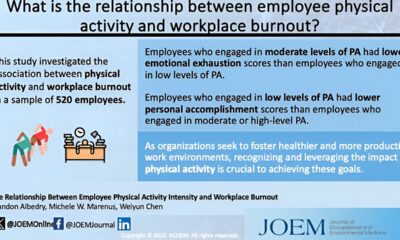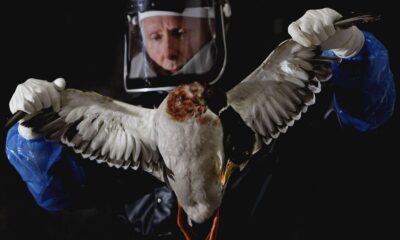Health
Michigan is launching the first effort of its kind to track silent bird flu infections in workers

MIchigan has led the country in reaching its farmers as it has worked to limit the spread of H5N1 bird flu infections in dairy cows. Now state health authorities are trying to do the same in looking for undetected infections among farmworkers.
The Michigan Department of Health and Human Services is working with an undisclosed number of farms to assess the risk to workers of becoming infected with the virus, which has spread to at least 25 farms across the state over the past three months.
Until recently, Michigan led the list of states with outbreaks detected in herds. But no new infected herd has been confirmed since June 7, and Idaho has since overtaken Michigan as the state with the most affected herds. Nationally, there have been confirmed infections in 130 herds in 12 states since the outbreak in cows was first confirmed on March 25.
In that time, there have been two confirmed infections among farmworkers in Michigan, and a third in late March in Texas. But there are anecdotal reports of even more farmworkers who have been sick and experiencing flu-like symptoms but have not been tested. The type of research Michigan health officials have now undertaken, known as a seroprevalence or serology survey, can begin to determine whether there have been undetected cases, and if so, which activities could put workers at greatest risk.
The survey involves employees completing a questionnaire asking them about their activities at work and their contacts with cows and milk. Participating employees will also be asked to provide blood samples. Analysis of the blood samples will be done by laboratories at the Centers for Disease Control and Prevention, which is collaborating with Michigan on the study.
Natasha Bagdasarian, chief medical officer of the Michigan Department of Health and Human Services, told STAT Tuesday that the work — the first publicly disclosed such effort — should be considered a pilot or feasibility study. She declined to provide details on how many employees or how many farms have agreed to participate.
But while public health authorities in many places have struggled to get permission to do this kind of important work, Bagdasarian said that at some farms where her team operates, people have come forward wanting to be tested.
“As we talk to farm owners and farm workers, I get questions like, ‘I have more people on my farm who would like to get tested’ and ‘Can we get more people tested?’ People want this information,” said Bagdasarian, an infectious disease specialist.
“I talk to a lot of people who are really interested in understanding transmission dynamics, who are really interested in having conversations and hearing about what’s happening with other animal populations and what’s happening in other states, and who are really interested in deploying our combined knowledge together to understand the dynamics of disease transmission,” she added.
Bagdasarian, who spent part of Tuesday at a dairy farm, said the work reveals there is a lot of variation between the setup and procedures of different farms. Many don’t have many employees, she said, and those that are there participate in feeding, milking and administering medications to the animals.
“There are different types of equipment and different types of milking methods. And we need to try to understand those details to fully quantify what risk looks like to humans,” Bagdasarian said.
Demetre Daskalakis, director of the CDC’s National Center for Immunization and Respiratory Diseases, said the agency hopes other states will be able to conduct similarly structured surveys.
“A really important part of the work in the seroprevalence studies that we really want to do is that we have consistency in the testing and consistency in the survey,” he said at a news conference hosted by the Department of Health and Human Services and the U.S. Department of Agriculture. “That partnership with Michigan has been very important.”













